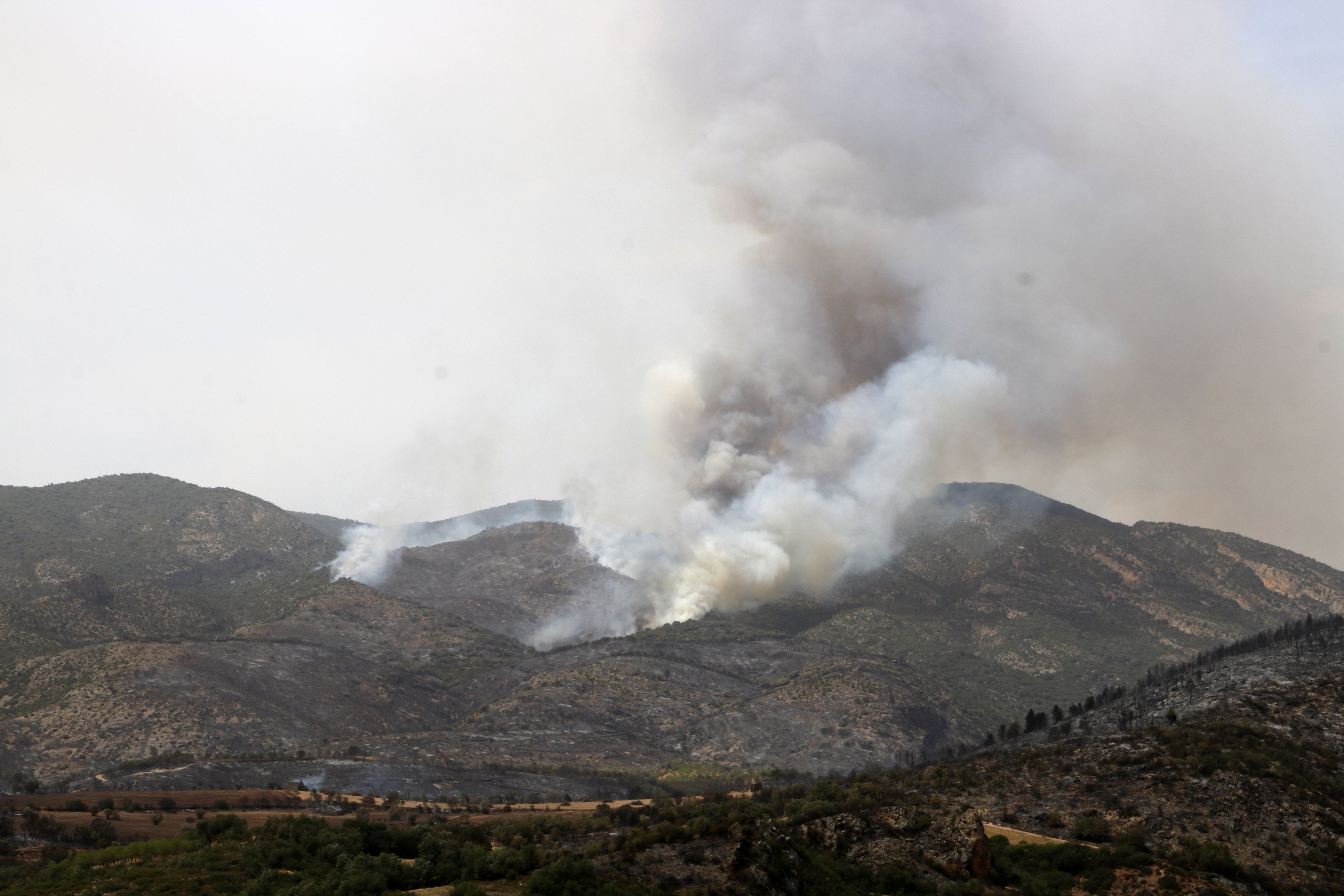Resources are not infinite. Nor are the firetrucks, helicopters and human resources available to the Catalan fire service. The public firefighting service was pushed close to its limits on Thursday because of the presence of several active wildfires burning simultaneously in different parts of Catalonia, all of them with high potential to cause damage and which were burning out of control.
Although the fire fighting operation activated by the fire service had about 400 firefighters and 120 vehicles deployed in the different areas, with the addition assistance of 100 soldiers from the Military Emergency Unit (UME) and about twenty air units from the Catalan interior ministry, the situation was very tense throughout the day. In addition to the fires already raging in the Solsonès and La Noguera counties in western Catalonia, and in Terra Alta to the south, a fire was declared in the middle of the afternoon in Sallent, in the central Catalan county of Bages, that also suddenly placed new demands on the fire service's assets. With the current extreme temperatures across Catalonia set to remain high over the weekend, the challenge for the firefighters continues.

This Friday, at the Advanced Command Centre (CCA) that the service has set up in Bellaterra, just inland from Barcelona city, the Catalan interior minister, Joan Ignasi Elena, highlighted the fire service's planning and strategy for a situation like the present one. The resources available, which are not infinite, mean that firefighting technicians have to design strategies to deal with fires, according to their potential, and often, without being able to attack them head on - having to wait for them in places that are easier to control. This inevitably burns a much greater area, but it is the only way that the firefighters, because of the resource limitations and often also because of the geographical location of the active flanks, can hope to control situations when the threat is large and may suddenly become much larger.
The "intelligence" to attack new fires
Elena pointed out that yesterday, with the Sallent fire, which could also have been very complicated if it had not stopped, this "intelligence" would have made it possible to attack the fire with agility. The same strategy can also be seen in the approach to extinguishing the fires in southern Corbera d’Ebre and western Artesa de Segre. In the case of the former, the simultaneity of other fires did not allow a more direct attack.
Lines had to be prepared to stop the flames by taking advantage of roads and other natural firebreaks; and it worked, but the affected area has reached 400 acres. A similar case in La Noguera. Firefighters are already working on an affected area of 2,000 hectares and hope to encircle it, and are using the same technique, due to the impossibility of attacking it any differently, to limit the damage to an area of 5,000 hectares.

Thus, not having to allocate resources to try to stop the flames and positioning teams and equipment at key points to encircle the fires allows the firefighters to have sufficient resources available to attack directly - in this case, yes - new fires that might break out in other parts of Catalonia, and thus prevent more misfortunes by stopping small blazes from turning into major ones. But of course, if there is a fire blazing in the forest near your town, this strategy is hard to understand. The fire chief, inspector David Borrell, asked for understanding from the public and for mayors of the affected municipalities, recalling that some of these fires, with that of Artesa de Segre (La Noguera) as the clearest case, must be allowed to burn, in order to think about a "total country strategy", treating the multiple fires as a single emergency.
Difficult day, but more positive
The firefighters have declared three major fires to be stabilized: two that had been raging for two to three days, in Corbera d'Ebre and Castellar de la Ribera, and yesterday's outbreak in Sallent. On the other hand, the larger Artesa de Segre fire and that of Lladurs (a second fire in the Solsolnès county) remain active. The latter is the most worrying, especially the right flank which is very long and an unstable perimeter. This fire was the top priority for the emergency services' operation this Friday, as minister Elena himself said this morning.
Meanwhile, in Artesa de Segre, the western area, which opens towards Sant Mamet, is still active, and the eastern, northern and southern areas are contained, where the planned lines of confinement have not been exceeded.

